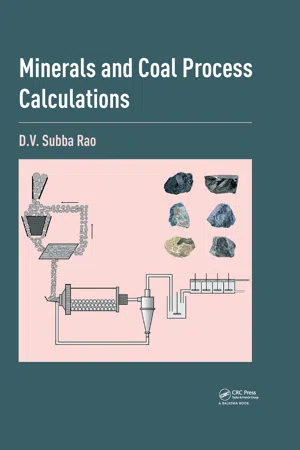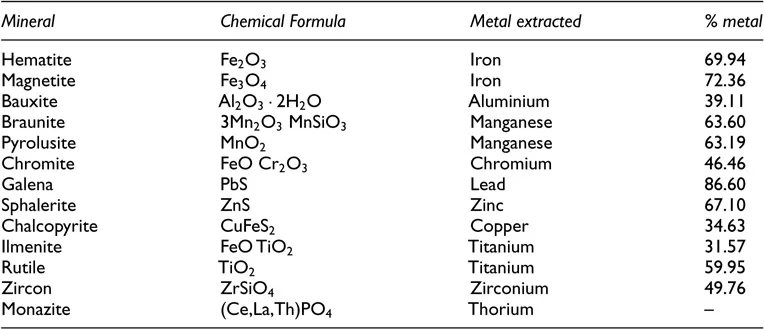
- 332 pages
- English
- ePUB (mobile friendly)
- Available on iOS & Android
Minerals and Coal Process Calculations
About This Book
The aim of process calculations is to evaluate the performance of minerals and coal processing operations in terms of efficiency of the operation, grade of the final products and recovery of the required constituents. To meet these requirements, in-depth detailed calculations are illustrated in this book.
This book is designed to cover all the process calculations. The method and/or steps in process calculations have been described by taking numerical examples. Process calculations illustrated in a simple and self explanatory manner based on two basic material balance equations will allow the reader to understand the contents thoroughly.
Inclusion of elaborate process calculations in every chapter is the highlight of this book. This book is unique and devoted entirely to the process calculations with sufficient explanation of the nature of the calculations. This book will prove useful to all: from student to teacher, operator to engineer, researcher to designer, and process personnel to plant auditors concerned with minerals and coal processing.
Frequently asked questions
Information
Chapter 1
Minerals and coal
1.1 TYPES OF MINERALS


Table of contents
- Cover
- Half Title
- Title Page
- Copyright Page
- Dedication
- Table of contents
- Preface
- Acknowledgements
- List of tables
- List of figures
- 1 Minerals and coal
- 2 Material (mass) balance
- 3 Sampling
- 4 Size analysis
- 5 Screening
- 6 Density
- 7 Liberation
- 8 Comminution
- 9 Crushing
- 10 Grinding
- 11 Principles of settling
- 12 Classification
- 13 Beneficiation operations
- 14 Sink and float
- 15 Float and sink
- 16 Metallurgical accounting
- 17 Coal washing efficiency
- 18 Process plant circuits
- Annexure: Procedure for determination of bonds work index
- References
- Further readings
- Subject index
- Index for calculations